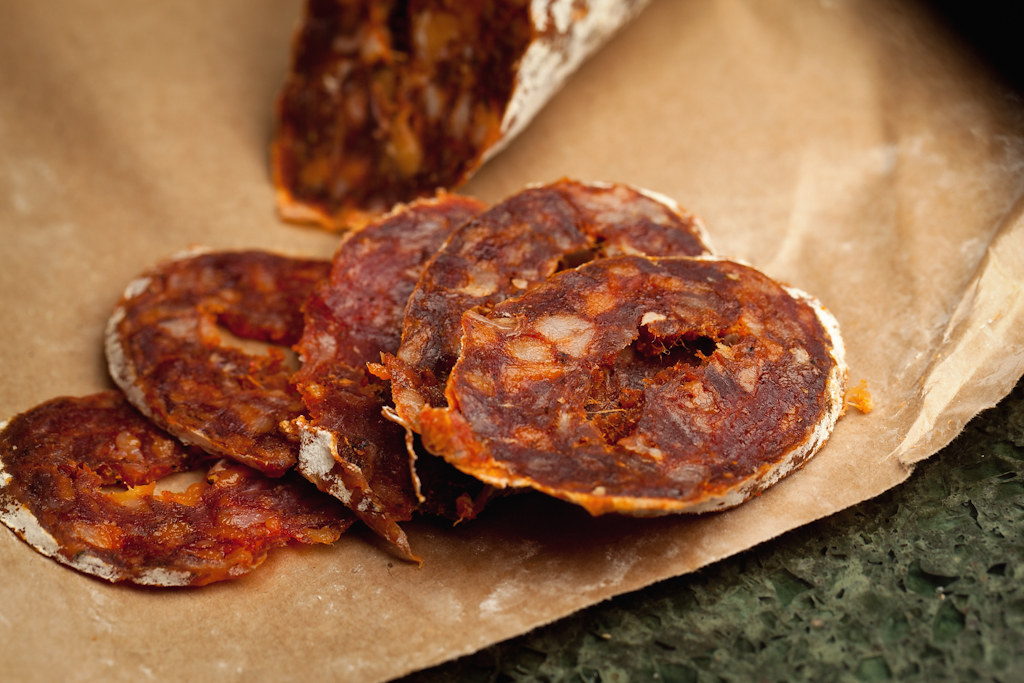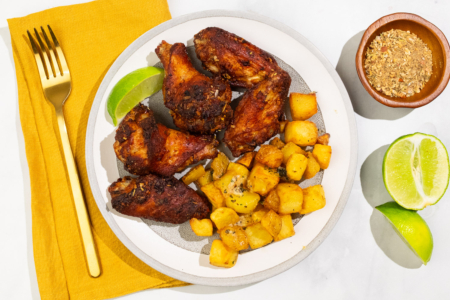Piquant and spicy, chorizo sausage brings intense flavors to a variety of dishes and is a welcome addition to any charcuterie board.
History
While chorizo in its current form originated a few hundred years ago, the idea of curing meat as a means to preserve it is a concept that has existed for thousands of years. Furthermore, there are records of sausages infused with herbs and spices from as far back as the Roman empire. However, when talking specifically about the chili-infused sausage known as chorizo, we need to look at a very specific period in the early years of European colonialism. Chorizo derives its uniquely smokey and spicy flavor to paprika. This bright red spice is made from the dried sweet peppers of a variety of capsicum annuum plants. Paprika was first used by indigenous north and central Americans as a food seasoning for millennia. In the sixteenth century, paprika was brought to Spain from central and South America by the conquistadors where it was soon combined with sausage, and the rest is culinary history.
While there is no specific record of its inception it is assumed that chorizo was first invented in the Catalonian region of Spain. As a direct result of colonialism, western expansion, and global trade many countries across Europe, Central and South America, and South-East Asia have developed their own regional variations of chorizo.
Production

While it may differ across regions generally, chorizo is made from a combination of chopped pork, pork fat, and, depending on the region, either chili or paprika. The types of paprika or chili can also vary. Most Spanish chorizo is made with smoked paprika, but versions made from sweet and extra hot chili powders also exist.
To make fresh chorizo roughly chopped pork is combined with pork fat. The mixture is then seasoned with large amounts of paprika and salt. In most cases, this mixture is then left to ferment for a few days before being put into sausage casings. Finally, cured chorizo is left to dry for several days. The curing process makes the sausage safe to eat without cooking.
Flavor

The unique taste of chorizo is the result of a combination of ingredients and the fermentation and curing process. Fatty and heavily salted pork gives the sausage a rich umami flavor while the smoked paprika adds a distinctly smokey and sweet spiciness to the mix. The fermentation process gives the chorizo an additional tartness not often found in other sausages.
Uses

Chorizo is endlessly useful and can be utilized in breakfast, lunch, and dinner recipes from a wide variety of culinary styles. Not only does chorizo add a wonderfully smokey, spicy, and piquant flavor to food but the vivid red paprika adds a welcome pop of color.
Arguably the most famous recipe to use chorizo is Spanish paella, other noteworthy dishes include Alubias de Tolosa and Caldo Verde.
Types
Chaurice
Often found in Creole and Cajun cuisine, Chaurice is a variation of chorizo that is made from pork, green onions, cayenne pepper, red pepper flakes, thyme, celery powder, parsley, and garlic.
Mexican Chorizo
Mexican chorizo is usually made from pork and unlike its Spanish equivalent, it is seasoned with chilis and vinegar. Along with regular Mexican chorizo, there is also a verde version that is made with tomatillos and green chilis.
Portugues Chorizo
Similar in many ways to Spanish chorizo, Portugues chorizo (or chouriço) is made from pork, paprika, garlic, and wine. Like many Spanish versions, it is either smoked or cured before eating.
Spanish Chorizo
Far from being a catch-all term, there are countless different styles of Spanish chorizo from various regions and cultures in Spain. While they have certain differences, these variations all have the essential ingredients of pork and smoked paprika in common.
The three most common types of Spanish chorizo are:
Fresco: This is raw chorizo that needs to be cooked.
Semicurado: This is semi-cured sausage. While it has been smoked and fermented it is still technically raw and requires cooking before eating.
Curado: This is the type of chorizo most commonly found in grocery stores in the United States. It has been cured, fermented and dried and does not need to be cooked.



